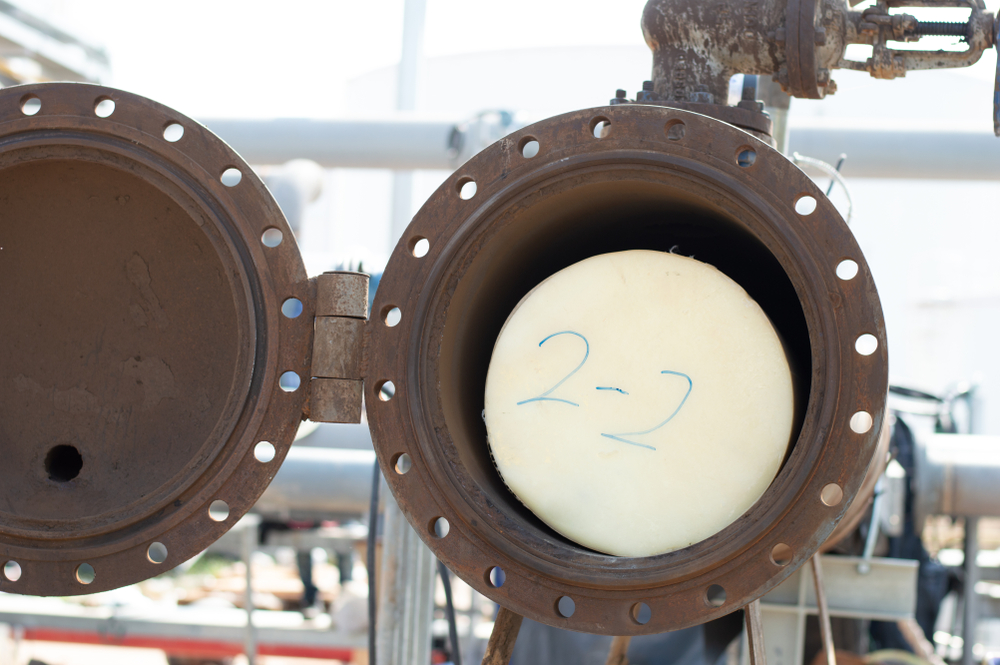Maintaining the integrity and efficiency of pipelines is crucial in industries that rely on the safe and reliable transport of liquids, gasses, and other materials. Regular pipeline cleaning is essential to this maintenance process, as it helps prevent blockages, corrosion, and other costly issues.
One of the most effective pipeline-cleaning methods is pigging, a technique that uses specialized tools called pigs to clean and inspect pipelines. This article explores the importance of regular pipeline cleaning and the vital role pigging plays in keeping pipelines free of debris and buildup.
Why Regular Pipeline Cleaning Matters
Over time, pipelines can accumulate various forms of debris, such as:
- Scale: A buildup of mineral deposits that can restrict the flow of materials through the pipeline.
- Corrosion: Rust and other forms of metal degradation that can compromise pipeline integrity.
- Wax and Sludge: These residues are common in oil and gas pipelines and can reduce flow efficiency.
- Foreign Materials: Dirt, sand, and other contaminants that enter the pipeline during operation or maintenance.
This debris can lead to significant problems, including reduced flow capacity, increased pressure, leaks, and even pipeline failure. Regular pipeline cleaning helps to avoid these issues, extending the life of the pipeline and ensuring it operates at peak efficiency.
The Role of Pigging in Pipeline Cleaning
Pigging is one of the most effective pipeline-cleaning techniques available. It involves sending a device known as a pig through the pipeline to remove debris, inspect the pipeline’s condition, and improve flow efficiency. Pigs come in various types, each designed to serve a specific purpose, from cleaning to inspecting.
Some of the critical benefits of pigging include:
- Debris Removal: Pigs physically scrub the pipeline walls, removing scale, wax, sludge, and other buildup that can reduce flow rates.
- Flow Optimization: By clearing blockages and obstructions, pigging restores the pipeline to its total flow capacity, reducing pressure and energy consumption.
- Inspection: Smart pigs can detect potential issues such as corrosion, cracks, and dents, allowing operators to address problems before they become critical.
Types of Pigs Used in Pipeline Cleaning
Different types of pigs are used for cleaning, depending on the specific requirements of the pipeline. Common types include:
- Foam Pigs: Flexible and lightweight foam pigs clean pipelines with varying diameters and complex configurations. They are particularly effective at removing light debris and moisture.
- Brush Pigs: Equipped with wire brushes, these pigs are used for more aggressive cleaning tasks, such as removing scale, rust, and other challenging deposits.
- Scraper Pigs: Designed with blades or scrapers, these pigs are ideal for removing heavy deposits, wax, and sludge. They are commonly used in oil and gas pipelines.
- Multi-Purpose Pigs: These versatile pigs combine cleaning and inspection capabilities, allowing operators to perform both tasks simultaneously.
The Pigging Process: How It Works
The pigging process typically begins by launching the pig into the pipeline through a pig launcher device. The pig is propelled through the pipeline by the flow of the transported material, such as oil, gas, or water. As the pig moves through the pipeline, it cleans the walls by scraping away debris and buildup.
In the case of intelligent pigs, sensors collect data on the pipeline’s condition, which can be analyzed for signs of wear, corrosion, or other issues.
Once the pig reaches the end of the pipeline, it is removed through a pig receiver. The debris collected during the pigging process is analyzed, and the data from intelligent pigs is reviewed to determine if further maintenance is needed.
Benefits of Regular Pigging for Pipeline Health
Regular pigging offers several advantages for pipeline operators, including:
- Improved Flow Efficiency: By removing debris and buildup, pigging ensures pipelines operate at total capacity, reducing energy costs and minimizing downtime.
- Extended Pipeline Life: Routine pigging prevents corrosion, blockages, and other issues that can shorten the lifespan of a pipeline.
- Early Detection of Issues: Inspection pigs can identify potential problems before they become serious, allowing operators to take corrective action and avoid costly repairs or replacements.
- Regulatory Compliance: Many industries, particularly oil and gas, are subject to stringent regulations regarding pipeline maintenance. Regular pigging helps operators stay in compliance with these regulations.
Best Practices for Pipeline Pigging
To maximize the effectiveness of pigging, it’s essential to follow best practices. This includes:
- Regular Pigging Schedules: Establish a pigging schedule based on the specific needs of your pipeline. Factors such as the type of material being transported, the age of the pipeline, and environmental conditions should all be considered.
- Monitoring Pipeline Conditions: Regularly monitoring the pipeline’s condition can help determine the appropriate type of pig to use and the pigging frequency.
- Choosing the Right Pig: Different kinds of pigs are suited to different cleaning tasks. Selecting the correct pig for the job ensures thorough and effective cleaning.
- Data Analysis: Smart pigs collect valuable data about the pipeline’s condition. Analyze this data to identify trends and potential issues that require attention.
Enhance Your Pipeline Operations with Inline Services
Pigging is an essential technique for maintaining pipeline health and efficiency. Whether you need to remove debris, improve flow, or inspect the pipeline’s pigging, keeping your pipeline systems in optimal shape is critical.
If you’re looking to re optimize your pipeline cleaning processes, Inline Services offers a range of advanced pigging solutions tailored to your specific needs. With over 30 years of experience in pipeline maintenance, Inline Services provides industry-leading expertise and cutting-edge tools to help you maintain pipeline integrity. Contact our team today to learn more about our comprehensive pigging services and how we can help enhance the safety and efficiency of your operations.







